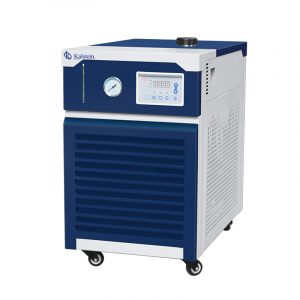When it comes to handling chemicals in a laboratory, it is important to ensure a safe experience for all users. Preventing inappropriate injuries and thermal shock are important for safety in the chemistry lab, especially when working with evaporators and recirculation coolers. These safety precautions are reflected in some general recommendations that should be followed when working with laboratory equipment.
In Kalstein laboratory equipment, we have a series of recirculation coolers YR, that you can know HERE, that will meet the demands and challenges of chemistry laboratories, thanks to its features and design of the latest technology, we as manufacturers guarantee equipment designed with the best materials on the market, offering the lowest prices and the necessary advice to make your purchase, do not hesitate to visit us HERE.
Safety measures when using recirculating coolers for evaporators in the chemistry laboratory
First, it is important that any apparatus to be used in a laboratory is previously checked and has all the necessary documents to ensure that it is certified by the competent authority and is safe to use. This includes checking the functional condition of the equipment and checking that all parts are attached and fit properly.
Second, all laboratory users must read, understand and follow the appropriate safety instructions for the apparatus. This includes reading the user’s manual for a thorough understanding of the safety and features of the equipment, as well as studying the procedures in place to ensure the correct level of safety.
Third, it is also important to use the equipment safely. This means that the user must follow proper technique to ensure that the equipment operates correctly. This includes using safety elements suitable for the equipment in question and to prevent any harm to users, as well as to allow proper handling of the equipment.
Care with liquids
When it comes to working with recirculating coolers, the most important safety measures to keep in mind are care with liquids. This refers specifically to the handling of hot liquids and the danger of spilling hot liquid in the work area. Therefore, it is important that the user always use appropriate liquid protectors to avoid any damage from spills. It is also recommended that safety containers be used to contain the hot liquid, thus controlling possible spills.
In addition, care should be taken when handling any hot liquid to avoid inhalation, and users should always wear gloves to protect their hands. Finally, it is important to remember that improper connection of the equipment and/or an overheated cooler can result in extremely hot steam or damage to the equipment.
Preventive measures
Other important precautions include the proper and routine use of safety equipment. This is especially important when working with recirculating coolers, as the liquid circulation filter should be changed regularly to prevent contaminant buildup.
In addition, it is advisable to carry out periodic cleaning of the equipment to remove any debris that may accumulate. This will help ensure that the equipment has adequate durability. In addition, it is important that all laboratory users are aware of the cleaning protocols established by the laboratory.
Ensuring safety in the laboratory
Ultimately, it is important to ensure a safe laboratory experience. This includes establishing clearly defined safety procedures to ensure that recommendations are followed and established requirements are met. There should also be someone to oversee periodic maintenance to ensure that the equipment is functioning properly.
In conclusion, when working with recirculating coolers, it is important to take proper safety precautions to ensure a safe experience. This includes checking the pre-condition of the equipment, reading and following safety instructions for equipment use, using proper fluid shields, performing periodic cleaning of the equipment, and ensuring that established safety recommendations and protocols are followed.


